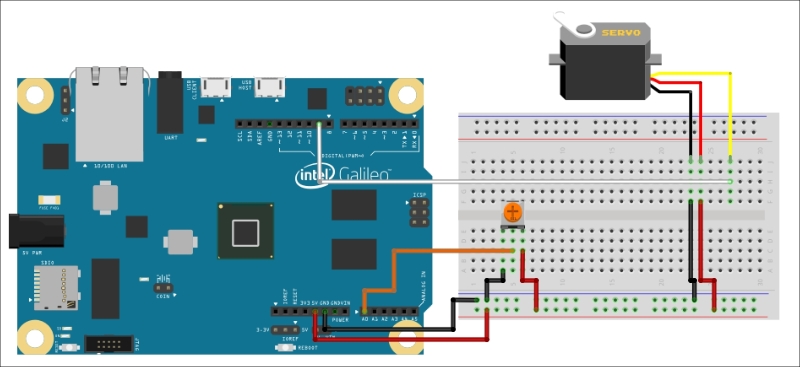We now proceed to the second part of this project—the servomotor controller. By this time, we have an idea on how to use the output pins of the Galileo board.
We will first assemble the servomotor controller circuit for this project.
Here is the schematic that you can refer to as your guide:

Aside from the schematic representation, here is a step-by-step guide to make the servomotor controller. The steps are carefully laid out for you to be able to finish the circuit in the easiest way possible:
First, you have to place the potentiometer on the far end of the breadboard. This will be our starting-point.
Then, connect one of the potentiometer's pins to VCC, another pin to GND, and its middle pin to the analog pin A0 of the Galileo board (you can check out the link of the potentiometer in the hardware requirements section portion, to see the internal connections through its datasheet).That's all the connections we need for the potentiometer.
Next, place the servomotor...

























































